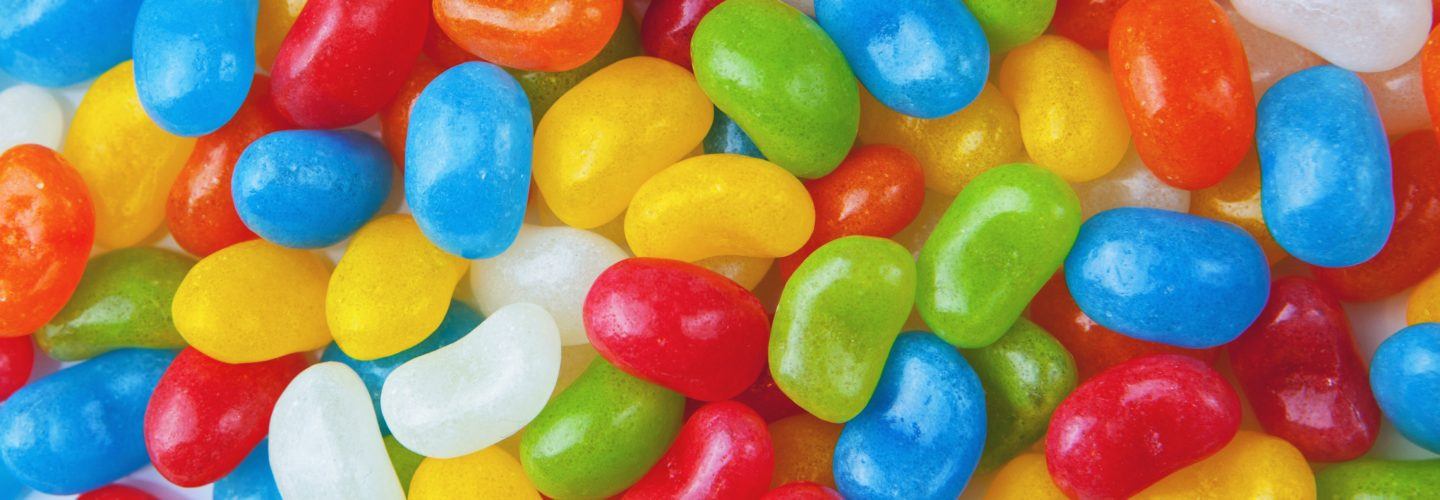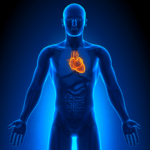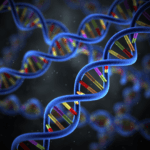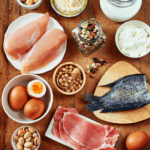If there’s one question I get asked often, it’s this one. And I understand why. Anyone who knows me, and knows how obsessed I am with everything I do, knows there is one thing on earth I cherish more than anything else – my daughter.
Any of you reading this post who are parents know exactly what I’m talking about. My daughter, and I know the same is true for Gary with his boys, is one of the greatest driving forces behind us founding NuSI. Why?
Picture the United States as a cruise ship. Overall, it’s a wonderful place to be. We have so many things to be thankful for (as do many folks outside of the U.S.). But, there are icebergs out there. If we continue the course we’re on, our fate will be similar to that of the Titanic. Unlike the Titanic, though, we actually have several icebergs in our path. That is, there are many different forces in the world today that – if left unchecked – could easily disrupt our way of living. I won’t go into detail about what I think the list of potential threats to our economic and social freedoms are – pension overhead, national security, energy security, structural problems with education – but I’ll assert my opinion on the first problem we need to get a handle on. If we don’t figure out a way to curb the twin epidemics of obesity and diabetes, our healthcare spending alone will bankrupt us. No one can pinpoint the day this will happen, but if not in my lifetime, I’d bet anything it will be in my daughter’s lifetime. In other words, of all the icebergs we need to skirt past, this one is the closest to our vessel.
So, back to the question. While we wait a decade or so for NuSI to fund the type of science that will unambiguously resolve the jugular question — What should people eat to maximize their chances for greatest health? — what do we do? If you’ve been reading this blog, you’ll certainly have a great idea for what I do, based on my interpretation of the data currently at our fingertips. But ambiguity remains, especially when asking an even more important question than what do I eat. Since my daughter (and presumably your children, for those of you with children) is infinitely more important to me than anything else, including myself, how do I interpret current data around what she should eat?
Principle 1: Excess sugar is not conducive to good health for anyone
I don’t think I need to spend any additional time reviewing the harm of sugar (e.g., sucrose, high fructose corn syrup, beet sugar, cane sugar, brown sugar). If you do want a quick refresher on this, you can read this post. If you can only make one intervention in the dietary pattern of your child, make it this one. Based on our experience and the experience I’ve had with clients, friends, and family, a trend has emerged. It seems the longer you wait to make changes in this area, the more difficult it can be. Not always, but often. Sugar is very habit forming, and from a neurochemical standpoint an addiction to sugar is not unlike an addiction to gambling, alcohol, or heroin. Yes, they all have nuanced differences, but each of these addictive patterns or behaviors results in stimulation of the dopaminergic pathways of the brain.
How do we translate this intent into practice? The easiest thing to do is to minimize the amount of sugar brought into the house. This means we don’t have soda, cookies, candies, cakes, cupcakes, and other similar nutritional weapons of mass destruction lying around. This doesn’t mean we never have them lying around. Invariably, a grandparent or neighbor will bring over a lollipop or some cookies, but this is an exception, not a rule.
Furthermore, we don’t have any juice in our house. Our daughter (who is 4) drinks whole milk and water. That’s it. Amazingly, she no longer finds sweet beverages enjoyable. Recently, at a birthday party, she was given one of those Capri Sun sugar-syrup drinks. She took one sip and asked for a bottle of water. It was actually too sweet for her.
As I explain below, she still gets some sugar in her diet, but it’s probably about 20% of what the average kid her age is consuming. And she gets plenty of fructose in the form of fruit. But when she eats fruit, it’s usually lower fructose fruits (e.g., raspberries, blueberries, strawberries) rather than higher fructose fruits (e.g., watermelon, banana).
Principle 2: The less processed the food is, the better the food probably is
As an extension of the first principle, if you always make trade-offs in favor of cooking your food, rather than pulling it out of a box or jar, you’ll win many of these day-to-day battles. At least half the week our daughter asks for cereal for breakfast (instead of bacon and eggs). Rather than dump her a bowl of sugar-laden cereal, my wife or I will make her steel-cut oatmeal, to which she’ll add milk and a few raisins and walnuts. Sure, it’s more carbs in one meal than I eat in 3 days, but it doesn’t contain sugar (beyond the fructose in the raisins).
When she wants spaghetti for dinner, we make her real sauce out of real tomatoes and garlic. No added sugar, of course.
This requires extra work, as you can imagine. It’s much easier to dump cereal out of a box or pasta sauce out of a jar. But if I need to sleep 15 minutes less or my wife needs to cut her run short 15 minutes to make it happen, is it worth it? For us, the answer is yes. But, it is a choice – of both time and money – every parent needs to make.
Principle 3: Insulin and insulin-like-growth-factor (IGF) are important for childhood development
This topic is highly complex. For anyone who has studied IGF-1, GH, IGF-BP3, STATb5, or any of the hundred other molecules involved in the highly regulated pathways of growth, don’t be offended. It would take another series the lengths of the cholesterol series to give this topic its fair shake. However, a few key points are worth noting. There is sufficient evidence, for me at least, that a growing child needs a modest dose of insulin to capture their genetic (vertical) growth potential. In fact, stunted growth is one of the documented side-effects of children on ketogenic diets, though there may be several factors accounting for that beyond the role of insulin and IGF (e.g., protein deficiency, caloric deficiency).
Ketogenic diets are a medically accepted treatment for recalcitrant seizures. About half the children whose seizures don’t respond to any medications almost immediately stop seizure activity once they are in ketosis. Some investigators, including Dr. Elizabeth Thiele, Director of the pediatric epilepsy program at Harvard’s Mass General Hospital, are investigating this approach in adults. I had breakfast with Dr. Thiele recently and had an amazing opportunity to learn from someone with enormous experience treating children with ketogenic diets (over bacon and eggs, of course). According to Dr. Thiele, who described some really amazing in vivo and in vitro research, the reason for the effectiveness is not entirely clear. That is, it’s not clear if the seizure activity is ameliorated by the presence of B-OHB (beta-hydroxyburyrate) or the stark reduction in glucose or the insulin, or some combination of these, or even something altogether different.
Of course, having too much insulin-like-growth factor is even worse. There are numerous medical reports that describe the opposite “growth” scenario – too much IGF-1, for example, being associated with increased childhood malignancy.
Everyone wants to know if my (non-epileptic) daughter is on a ketogenic diet. The answer is no. If I had to guess, she probably gets 40% of total calories in the form of carbohydrates, and very few of them are sugar. That said, she’s so used to seeing her daddy give himself “boo-boos” on his finger every day to check his ketone levels that I think she’s getting curious…but that will have to wait a long while.
Principle 4: Fat is fine
As much as you’ve heard me espouse the benefits of fat intake in adults, it’s equally or even more true in children. As the Harvard anthropologist Daniel Lieberman points out, as we evolved from chimps to homo erectus about 1.5 million years ago, and to homo sapien about 200,000 years ago, we required an increase in our storage of body fat (from about 4-5% to 7-8% to 12-14%). Why? Most likely to support the requirements of our rapidly growing and developing brains. At no point in our development is this more necessary than as children.
My daughter certainly consumes less fat than I do, but she still gets about 35-40% of her total caloric intake via fats – saturated, monounsaturated, and polyunsaturated. Perhaps her favorite breakfast of all is bacon and eggs with cream cheese. She likes to wrap a piece of cream cheese and scrambled eggs with a strip of bacon which she calls a “cooc-a-mooc.” Don’t ask me how she thought of that, but she loves them. She drinks whole milk (it’s always struck me as strange that the American College of Pediatrics recommends children switch from whole milk to skim milk abruptly at the age of 2), avocado by the truckload, and a wide variety of quality meats.
Principle 5: They are, after all, still children
My wife and I agreed a long time ago that we were not going to restrict our daughter’s eating when she was at birthday parties, on Easter egg hunts, out for Halloween, or on other “special” occasions. A few weeks ago we took her to Disneyland for her 4th birthday. (Anyone want to guess what it’s like for an ISTJ to spend 2 days at Disneyland? Were it not for the look on her face, I’m not sure I could have survived.) We decided, for these 2 days, she could eat whatever she wanted. The day started with a bag of cotton candy larger than her head. I couldn’t resist looking at the package to see that it contained 90 gm of sugar. I did the quick math on converting that dose of sugar from her weight (35 pounds) to mine (165 pounds) and realized it was like me eating 450 gm of pure sugar in 20 minutes – the length of time it took her to inhale it! That’s about 12 cans of soda. She went on to have pretzles and cookies for lunch and, of course, a cake for dessert after dinner.
The entire time I was watching her mainline sugar – more in one day than I consume in a year – I couldn’t help but chuckle. I sent pictures to my friends all day long. In the end, she was pretty sick of all the junk she consumed and welcomed her usual meals. But, for a couple of days she ate just like most any other 4-year-old would on her birthday.
Principle 6: No two kids are the same
As you’re reading this keep in mind, this is an anecdotal account of my life and my child. Yours will be different. What works for our child may not work for your child or children. Don’t worry about it! In the end you’ll be the best judge of what the optimal zone is. I really believe my daughter will live a healthier life because of the way she eats growing up. One day, of course, she’ll have to make her own choices. Will she completely rebel against everything we’ve tried to teach her? Perhaps, but I don’t think so. I really believe that kids are the product of the example set by their parents.
I used to always wonder where my tendencies came from. Not surprisingly, much of who I am today is the result of the behaviors I observed in my parents. It’s my belief that if my daughter grows up in an environment where an emphasis is placed on eating well, it will become a natural extension of her behavior, too.
Photo by Foodie Factor on Unsplash






Hi,
I want to ask about your record which you mentioned in interview with Andreas Eenfeldt. You have fasted 24 hours and then 6 hours rode. My question is, what pace you went in? 60% VO2 max or more or less?
Thanks
“Record” isn’t the right word, as they don’t keep records for this sort of thing. I don’t recall exactly, but the ride was hilly and so average power (about 175 watts) is less relevant than normalized power (about 230 watts).
Hi Peter!
I have been following your blog for a good year now and just am so very thankful for the information. I have had personal struggles with inflammation driven illnesses such as rheumatoid arthritis and even a bout of infertility, all of which I believe were cured (I am sure a more comfortable word would be “remission”, but I have to believe I am cured) due to the food I stopped eating (processed carbs, sugar, bad meat, carbs, sugar) and started eating (real food, bacon, raw milk, butter, very little carbs, greens, bacon).
Anyways, I just had my first child almost 9 months ago and make all of his solid food from scratch and it has occurred to me that no good food options are available for mothers and fathers who do not have the time or perhaps even knowledge of the importance of doing so for their children. I would really like to create a whole food option for babies and toddlers embarking on their first foods that is not a 45 gram of sugar pouched assault on their fragile digestive systems, and I was wondering if I could perhaps treat you to bacon and eggs, or a buttered coffee some day to discuss my idea a bit. Perhaps you would be interested in advising? Or if you could maybe point me in the direction of a pediatrician who shares your belief system that could help advise the creation of such nourishment for the babes? I live in San Diego and would be tickled with even 3 minutes of your time.
I realize this is a far fetch, but I truly admire and idolize the work you do at both your institute and this blog. I hope we someday can connect. Thank you for your work. It will and is making a difference.
With love,
Whitney
Am reading all the old blog posts & comments as fast as I can trying to learn enough to make good decisions for my insulin resistant 10 year old daughter. We’ve been no sugar and low carb 50ishg/day for a year, but insulin symtoms persisted. Endocrynologist recommended metformin and that seems to be “working” — weight is coming off. Problem is the endo & his nutritionist seem to be hung up on typical whole grain/balanced plate diet. They are “concerned” about our low carb and resulting high(er) fat intake. Is there a good source for nutrition info for insulin reaistant kids that I’m just not finding? I’m piecing things together here and here (as it seems many of your readers are) but wanted to make sure I’m not missing some obvious (or not so obvious) source for info for/about children.
Thank you.
Metformin is an ideal way to “break through” when hyperinsulinemia persists. Sounds like you need to stick to your dietary thoughts, and let the endo handle the medication. A child, in my opinion, does not need to be severely carb restricted. But sugar–in call forms, solid and liquid–and refined carbs should be out if they are pre-T2D, T2D, or have NASH/NAFLD. We don’t have data to confirm this (yet), but this is best hypothesis.
This was very interesting. I eat a KD and before that I was Paleo. My daughter, who is 11, loves to make keto recipes, and she is not strict keto but I never considered that would be a problem for her. I would describe her more as Paleo but she does have occasional grains (pizza at a party but she actually prefers “Fathead” pizza made with a cheese crust) or rice in sushi rolls (she really loves that). The grain treats are limited to occasionally. But, I would absolutely never allow cotton candy, not only for the extreme sugar content, but also because of the coloring. Yikes! I’m surprised that you would ok that one at all. My kids have never had candy before, except for dark chocolate 85% or greater (so low sugar). On Halloween, they are happy to go trick or treating, collect lots of candy, and trade it in for cash at the dentist’s office. Then, they can buy something like a toy. I buy them little toys and dark chocolate bars and we’re good. Just sharing my experience. And no cereal boxes here ever, almost everything cooked from scratch. Challenging for sure but doable.
Is there any research out there for women who are breastfeeding and want to do keto? I’ve loomed and have found very little. I found one person that says she did keto and breaatfees without problems and anither said it’s toxins to the baby from a mom in keto. I read some of your posts but haven’t found anything about ketones being released in breast milk and what levels ans are they dangerous to baby?
I haven’t looked since my wife has never considered a KD. If I had to make a choice without data I would vote no (evoking the precautionary principle).
Hi Peter
I have epilepsy as a side effect of tuberous sclerosis and just wondered if you had any information as to where changing my diet will still help.
I eat very healthy but not as strictly as you as above , thanks Hannah
Peter, You have a beautiful family. I so appreciate your insight on living in a Ketosis state. I am new at this and I can’t wait to start seeing results. It’s a little weird not being able to grab my traditional snacking comfort foods but I’m learning to appreciate the full fat dairy and meat options. I’m 49 yrs and my kids are 18 and 15. I know I have a lot of undoing from our past lifestyle. This kids are excited to see how well it works. Thanks again for sharing.
I note that your daughter drinks whole milk which brings up the subject of calcium.
I have been getting all sorts of controversial information from various sources.An example of such:
“Like all animal protein, milk acidifies the body pH which in turn triggers a biological correction. Calcium is an excellent acid neutralizer and the biggest storage of calcium in the body is – you guessed it… in the bones. So the very same calcium that our bones need to stay strong is utilized to neutralize the acidifying effect of milk. Once calcium is pulled out of the bones, it leaves the body via the urine, so that the surprising net result after this is an actual calcium deficit.”
Your valued opinion is always much appreciated
So does milk pull calcium from our bones?
Peter,
I thoroughly enjoy all of your articles and I have watched your video on Ketosis multiple times. Your practice is fascinating to me. I especially enjoyed reading this article about your daughter. I have 2 daughters myself and its so good to see that even though you follow a strict eating protocol you don’t force that on your daughter but allow her to be “a normal kid” with parameters of course. I completely agree with you that children tend to follow their parents example, especially as they become adults. You have a beautiful family!
I have a question unrelated to this article (and you may have answered this in another post of yours but I have not found it yet). I have experimented with a ketogenic diet in the past as well as simply low carb diets and I am curious about a couple things…
1. Are the benefits of nutritional ketosis still there if you allow yourself meals that pull you out of ketosis maybe 1 day a week? Keeping in mind it usually takes me 3 days to get back into ketosis, so I may only be in ketosis for 3 days out of the week.
2. Is there a sweet spot of fat intake (say in # of fat grams or calories) for obtaining sub 10-12% bf for a female on a ketogenic diet? ( I am currently at 16-18% bf)
Love that last pic! Great kid shot. Reminds me of too many days at D-land with my own daughter.